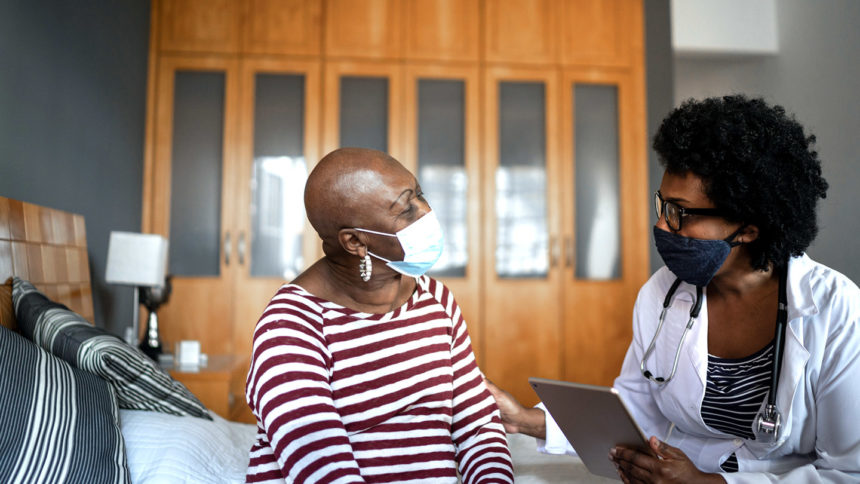
(Credit: FG Trade / Getty Images)
Senior living and care providers have been “incredibly agile and dedicated” during the pandemic, working 24 / 7 to keep residents safe, researchers concluded after interviews with operators about their pandemic experiences, challenges and successes.
“As it looks increasingly likely that the coronavirus will become endemic and a permanent part of our lives in some fashion, it is imperative that the industry take stock of the lessons learned during this time,” investigators from the National Investment Center for Seniors Housing & Care and the research organization NORC at the University of Chicago wrote in a white paper. “Throughout this entire period, the seniors housing and care industry proved how quickly they can respond and how agile the industry is,” they added.
NIC and NORC researchers spoke with a dozen operators from Colorado, Connecticut, Florida, Georgia and Pennsylvania, as well as with representatives of eight state affiliates of LeadingAge and Argentum, in March and April. Discussions covered staffing and workflow changes, testing strategies, personal protective equipment access, challenges with memory care residents, interventions to address loneliness and social isolation, and COVID-19 vaccination efforts.
“A predominant theme from the interviews is that senior housing and care operators were incredibly agile and dedicated through the pandemic and worked 24/7 to keep residents safe while continuing to compassionately care for residents,” the researchers said.
The investigators noted that, as reported by NIC earlier this year, overall, 64% of senior living properties studied had no COVID-19 deaths in 2020. That included 67% of independent living communities, 64% of assisted living communities and 61% of memory care communities. A secondary analysis of continuing care retirement communities found that those settings were associated with a significantly lower expected mortality rate compared with non-CCRCs.
A second phase of the study, expected to be completed by March, will compare death rates across care levels to understand the effect of the coronavirus on all-cause mortality by care setting.
Vaccination
The researchers lauded “forward-thinking operators” who mandated staff vaccinations as a condition of employment shortly after federal authorization of the COVID-19 vaccines.
Education, they said, became a “critical component of vaccination efforts across the board and [was] necessary to fight misinformation. Town halls, video messages and one-on-one conversations with peers and outside physicians were used to deliver effective messaging,” they noted.
Staffing, workflow changes
The public health emergency led to fundamental shifts in processes, workflows and operational thinking. The white paper authors said that “operators remained nimble, adapting to keep their properties appropriately staffed to meet the social and medical needs of residents.”
Along with adopting procedures for appropriately donning and doffing PPE, communities had to set up plastic walls and established processes for caring for COVID-positive residents and remaining safe going to and from work.
Faced with staffing shortages the researchers described as “devastating,” some operators maintained a stable workforce through employee recognition and appreciation programs and increased communication, whereas others turned to incentive pay, bonuses and additional paid time off.
In the early days of the pandemic, many operators established emergency command centers or task forces solely focused on the pandemic. Many worked from rapidly changing — and often conflicting — guidance from local, state and federal authorities. No COVID-19 manual of protocols existed, researchers noted.
With activities canceled, meals delivered to individual rooms and bans on visitors, operators had to find creative ways to prevent social isolation and loneliness among residents. Technology brought religious services and activities into residents’ rooms. Some were able to offer hallway activities, with residents participating from their doorways. Meal delivery became an important social outreach activity.
The study was co-sponsored by the John A. Hartford Foundation.


